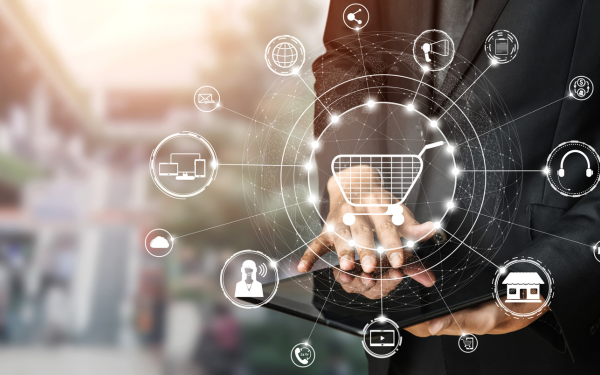It’s that time of year when people like to look forward and predict what the big trends of the coming 12 months will be.
As far as retail and POS go, there are rarely any surprises. While the pace of change in retail technology continues to be rapid, you at least get to see the big changes from a long way out. And they hold a pretty straight course.
Next year’s big retail trends are unlikely to be much different to last year’s. We’ve all seen the direction of travel for some time now. Payment types multiplying. Data and AI providing ever more personalized, seamless experiences. And omnichannel integration of all the different ways available for people to purchase these days, both online and off.
Omnichannel is not a new concept anymore. But it’s still one many businesses struggle with in practice. Achieving consistent, unified experiences across multiple online channels is one thing. But then how do you extend that in store?
This is an area where POS technology has been making rapid advances, pulling down the old distinctions between online and off. If you haven’t started already, 2024 is the year to make your in-store experience omnichannel. Here are three ways to do it.
Introduce BOPIS options
Buy online, pickup in store fulfilment options – affectionately known as BOPIS – are a great way to ease yourself into closer physical-digital alignment. It’s a simple concept – instead of dispatching online orders by courier or post, buyers come to your premises to collect their items. As long as you make sure you have the items people order in stock, it can save you a lot of logistical headaches versus mailing items.
BOPIS is also popular with consumers. A third of American shoppers bought online but collected in store in 2022, racking up $95bn in sales in the process.
Integrate in-store POS with ecommerce
One of the reasons physical and ecommerce operations have often been run in separate silos in the past is because, on a technical level, connecting ecommerce and POS systems hasn’t been easy. But all of that has changed. Modern cloud-based software and API architectures mean IT systems today are designed to integrate readily.
Close integration of your POS and ecommerce systems lays the foundations for making your business more omnichannel. It’s the best way, for example, to run BOPIS, without having to build a separate system that patches online orders into your in-store inventory. Just plug the two existing systems you have together.
Beyond that, integrated POS and ecommerce means you can collect data from all sales and customer journeys in one place. You can ensure tighter control of pricing and promotions for a more consistent experience (consumers hate online/offline mismatches in price). And you have a platform for experimenting with how you can blur the lines between digital and physical even more to the benefit of your customers.
Make your store mobile-friendly
When we talk about ecommerce these days, we’re mostly talking about mobile commerce. 80% of consumers in the US now make purchases via their cell phones.
But what’s really interesting about mobile’s role in modern commerce journeys is the way that mobile devices have become the gateway to omnichannel retail. Consumers use cell phones to browse and buy via conventional ecommerce sites in a web browser, via purpose-built mobile apps, via social media accounts. They also regularly use their mobile devices as they shop in store, checking reviews, comparing prices, or looking up product details.
Making your store more mobile-friendly is therefore key to offering a more omnichannel experience. That can start with simple things like providing robust customer WiFi so customers get a great signal and don’t have to use their own data (just keep customer WiFi separate from your business WiFi for security reasons).
From there you can think of ways to embrace cell phone use in store to enhance the experience, such as scannable codes on shelves so customers can bring up extra product information (including from your ecommerce site) in an instant. Or looking to the future, using AR to create more interactive digital experiences in store.




